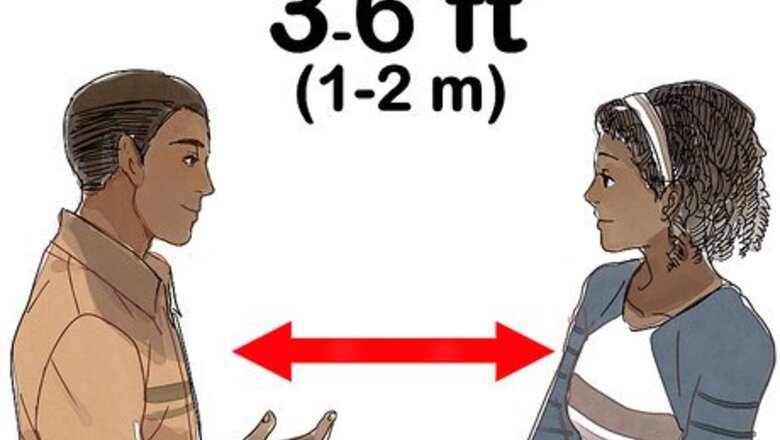
views
X
Research source
Whatever method you choose, there are some general rules of etiquette to help guide you. The most important thing is to be polite and attentive.
Communicating Through Lip-Reading
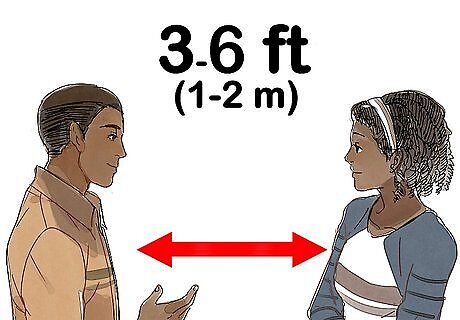
Stay in their field of vision. When communicating with a deaf person, try to keep your eyes at the same level as their eyes. You can sit down if they are sitting, or stand up if they are standing. You should be a little further away than the normal speaking distance (3-6 feet, 1-2 meters). This helps to make sure they'll see all of your gestures. If you're indoors, make sure there's enough light for them to see you clearly. If you're outside, face the sun so that there isn't a shadow cast in your face and the sun doesn't glare in theirs. Avoid placing anything in or around your mouth (chewing gum, your hands) while you are talking.
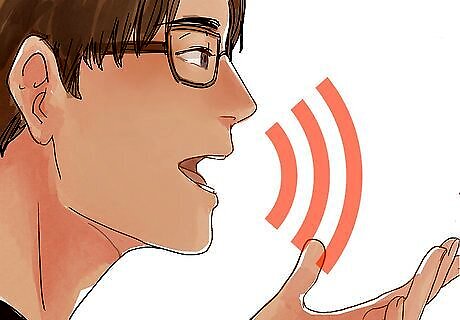
Speak in a normal voice and tone. As best you can, try to speak normally. Whispering or shouting will can distort your lip movements, making it difficult for a deaf person to follow your words. Similarly, if you exaggerate your mouth movements, you will be harder to understand than if you speak normally. Increase the volume of your voice only helps if the person asks you to do so. Speak a bit slower if the person asks you to do so.

Maintain eye contact. Your eyes and facial expression help to communicate the tone and demeanor of your conversation, so it is important to maintain eye contact. Do your best not to turn your head away while you are speaking. Also, try and make sure they are maintaining eye contact. For example, if you're teaching them how to use an object and they are looking at the object, wait for them to be done looking at it before you continue. If you have sunglasses on, take them off. If you can add facial expressions to emphasize a point (smiling, rolling your eyes, raising your eyebrows) do so, where appropriate.

Use gestures and visual cues. It can be helpful to incorporate some physical movement or props into your communication. You might point to (pointing is generally not considered rude in the deaf community) or hold up any items that you're talking about, or mimic actions (like drinking or jumping or eating) to help illustrate your words. You can hold up fingers to indicate numbers, scribble in the air to show you're writing a letter, and so on.
Using Sign Language

Determine your language. Some (though not all) deaf people will communicate using sign language. Most countries have their own national sign languages. They are quite distinct from spoken languages and generally do not follow the same geographic distribution (for example, British Sign Language is very different from ASL). Sign languages are natural languages, with their own grammar and syntax; for example, the English phrase "I give to you" is one word (or "sign") in American Sign Language (ASL).
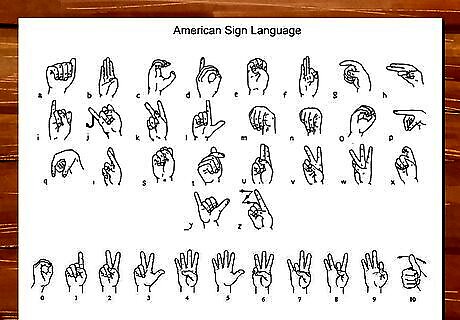
Study letter and numbers. If you are brand new to using sign language, you can begin by learning the letters of the alphabet, as well as your numbers. Knowing these can enable you to start communicating a rudimentary way, and help to get you comfortable signing. Visit https://www.startasl.com/american-sign-language-alphabet to practice the alphabet in ASL. Visit http://www.lifeprint.com/asl101/pages-signs/n/numbers.htm to practice your numbers.

Practice common phrases. Learning a few key phrases can help you communicate using sign language. Phrases like "please," "thank you," and "hello," can be used in a variety of contexts to communicate friendliness and respect. In ASL, these phrases are signed as follows: To sign please: place your hand flat against the center of your chest and move it clockwise in a circular motion three times. To sign thank you: touch your fingers to your lips (with your hand flat). Then move your hand forward and down in the direction of the person. To sign hello: touch your hand to your forehead with your palm facing downward. Then raise it away from your forehead (similar to a salute).
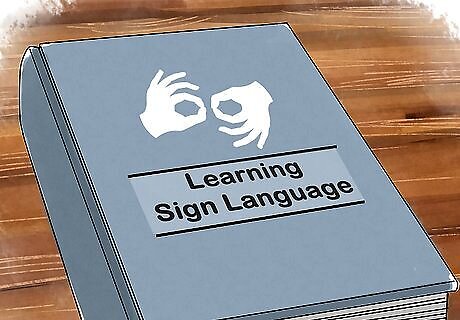
Improve your understanding of sign language. If you'd like to become proficient in sign language, you will need to study grammar, understand language structure, and expand your vocabulary. You'll also need to practice quite a bit. Sign language, like any language, require a fair bit of dedication to master. Take a course with a local college, university, or deaf organization. Join a signing club. Practice with a deaf friend.
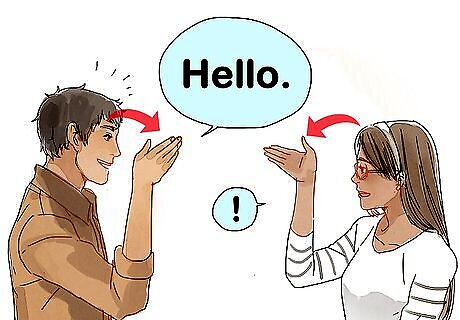
Confirm that the person speaks sign language. It is important to remember that not all deaf people use sign language. You must confirm that the person uses sign language before you begin a conversation. Start by getting the person's attention. Then sign the word "hello." If the person responds back in sign language, you can proceed with what you want to say. Remember that there are different sign languages. It may be possible that the person you are trying to communicate with uses a different form of sign language than the one you know.

Face your hands and body toward them. When you are communicating through sign language, it is important to keep your hands visible. Make sure to keep your hands and body faced in the direction of the person you are talking to. Sign with your hands out in front of you, at about chest level. If you must turn away for some reason, explain why are doing so and briefly pause the conversation.
Following General Etiquette

Get the other person's attention before attempting to talk or communicate. Making eye contact is a good way to do this. If needed, you can use a small wave from a polite distance (not too close) or light touch to get the person's attention. While you should be considerate and not poke people, generally it is not considered rude in deaf communities to lightly touch people you do not know to get their attention. The shoulder is a good place to touch someone you don't know well; use a couple of short taps.

Establish the gist of what you are going to talk about. Once they know the general topic, it is easier for them to follow your conversation. Try not to change the subject suddenly without pausing to signal the change. Pause often and ask if they are following you.
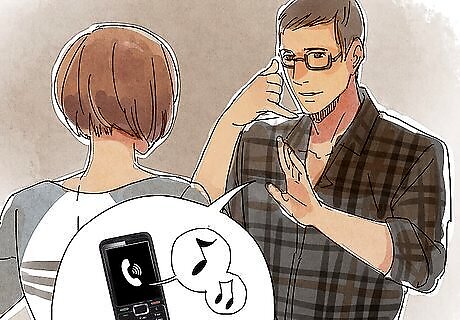
Explain interruptions. If there is an interruption that the deaf person may not notice, such as the phone ringing or a knock on the door, explain why you are stepping away. Otherwise, the deaf person may think you finished speaking to them, and this can come off as impolite.

Speak to the person, not the interpreter. If there is a sign language interpreter present to help you communicate, it is important to direct your conversation toward the person, not the interpreter (or another hearing companion). An interpreter will best understand how to help the deaf person grasp what you are saying, so don't worry about them.

Offer to summarize. As the conversation comes to a close, you may offer to provide a quick summary of what was said. This can be helpful for some deaf people, yet unnecessary for others, so always ask first. You might say, "Would it help for me to summarize what we just talked about?"



















Comments
0 comment